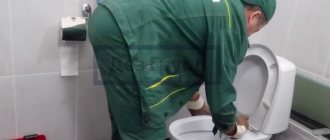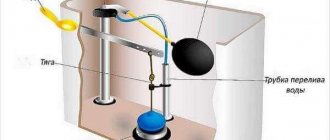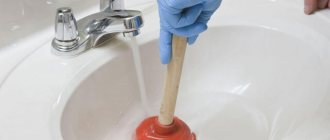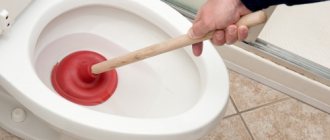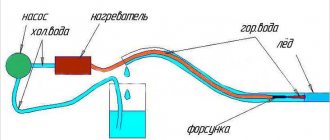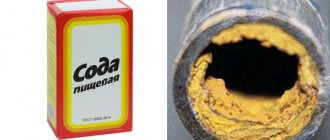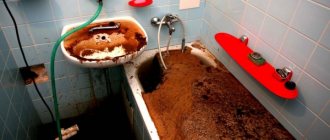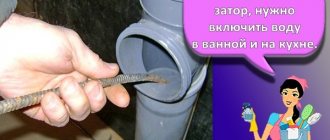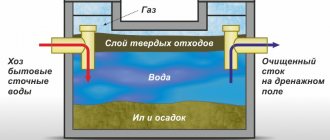Almost every person thinks about how to clean the sink and the blockage that has formed in it, because often the water stops fully flowing into the sink drain at the most inopportune moment. Sometimes there is not enough time to call a plumber and wait for him. Therefore, knowing several options for unclogging your sink, you can do it yourself. How exactly is written in our article.
Often the sink gets clogged at the most inopportune moment.
Using a plunger to clean a sink
The easiest way to clean a kitchen sink is to use a plunger, because this item is found in almost every home and even more: a plunger is a tool that is known all over the world. It consists of:
- wooden handle;
- a rubber cap placed on one end of the stick.
The plunger is quite easy to use. For this:
- It is necessary to close the drain hole in the sink or sink;
- Open, preferably hot, water;
- After the water covers the rubber bulb from above, you should make a certain number of pumps with the plunger, and quite energetically.
- These actions will create pressure differences in the drain pipe that destroy the plug that forms a blockage.
- At this point, you can lift the plunger.
- And with successful actions, the water will begin to swirl into a funnel and go into the drain that has been cleaned.
Scheme for using a plunger
Pro tip: If your sink drain is clogged, remember to use an empty cardboard milk carton to unclog your sink without a plunger.
It is necessary to insert the bag into the drain hole with a cut corner, and then press vigorously several times from above.
How to prevent blockages from forming in the future
It doesn’t matter how you break through the blockage, and what devices and skills you have - in any case, this is not the most pleasant experience, and sometimes, frankly, disgusting. The skill of how to break through a clogged toilet with a plunger is, of course, useful, but it is better to have knowledge about preventive measures and apply them in practice.
- Use as directed. You need to remember why the earthenware “friend” is in the toilet - to dispose of waste. Housewives often throw garbage into it after sweeping the floors or small household waste. All this will sooner or later lead to the need for cleaning work. All hygiene items and toilet paper should be thrown into a specially designated trash bin. There are certain types of toilet paper that say they dissolve in water, but these are not the usual gray roll, but more expensive options.
- Work control. In matters of draining water, you need to keep your finger on the pulse. As soon as it seems to you that the water is draining more slowly than usual, invite a specialist to your home or take preventive measures.
- Regular prevention. It is always better to prevent a blockage than to pierce the toilet with a plunger, so regardless of the quality of the toilet flush, take preventive measures once a month. Get a special solution that you will pour into the drain hole. This can be either a chemical purchased at the hardware store or a solution of soda, vinegar and salt mixed at home.
Hydraulic pump to remove blockage
If it is impossible to clear a clogged sewer pipe with a plunger, you can use a simple manual hydraulic pump. A powerful water flow to erode the plug through the pipe is directed downwards. If the plug is strong enough, then in order to move the plug up the pipe, it will be possible to use an upward movement, creating a suction force that may be quite sufficient for this.
The process technology is quite simple:
- The overflow hole should be covered with a damp cloth.
- Then fill the pump with water from the tap.
- Press the pump nozzle quite tightly against the drain hole.
- It is necessary to pump until the pipe is freed from the plug.
A conventional manual hydraulic pump can be used for cleaning.
Removing clogs with a regular plunger
Cleaning the sink
Removing clogs in the toilet and sink occurs in similar ways. First you need to place the rubber bowl of the plunger directly above the drain hole and press firmly. An important condition is the presence of water, which should cover the rubber bowl. Then you need to sharply and quickly press the plunger handle up to 3 times. Repeat the manipulations 3 or 4 times. The efficiency of the plunger depends on the speed and force of pressing the plunger handle. After pushing, you need to sharply tear the plunger away from the base of the drain hole so that the clog can come out.
Cleaning the toilet
If everything is done correctly, not a trace of the blockage will remain. However, in advanced cases, a plunger cannot solve the problem. For complex blockages, it is recommended to use chemical cleaning agents, and sometimes the intervention of a plumber.
Clearing clogs with baking soda
Before you clean your sink with baking soda, you will need the following items:
- cotton swab;
- kettle with water;
- a box of non-soda ash;
- a bottle of table vinegar.
After everything is prepared, you should:
- boil water in a kettle;
- wipe the sink so that its walls are as dry as possible, using a dry cloth;
- pour ½ cup of baking soda onto the drain hole; if it is impossible to pass through, use a cotton swab;
- pour ½ cup of vinegar into the drain hole;
- after 1-2 minutes, pour all the water from the kettle (boiling water) into the drain hole;
- you should open the tap - water should flow out of the sink at normal speed.
Baking soda is an affordable and effective cleaner
You can also resort to other means of cleaning sewer pipes.
Causes of pollution
Even high-quality pipes periodically become clogged.
The drain pipe in the bathroom becomes clogged due to the fact that: deposits settle on its inner surface:
- Threads from clothes when water is poured into the bathing container after hand washing and rinsing.
- Hair of any length.
- Pet hair.
- Body fat.
- Remnants. It’s not surprising, because hygiene products have a fatty base, so they also take part in the formation of blockages.
As a result, the inside of the pipe becomes overgrown with a layer of debris, which over time narrows the opening in the pipe. A dense plug is formed. One day it completely blocks the cavity and makes it impossible to drain the water, and therefore, use the bathroom.
Siphon cleaning
Disassembling the siphon
The siphon is located directly under the drain hole of the sink or sink. It is a curved pipe filled with water. Its main function is to isolate odors from the sewer. The siphon becomes clogged, as a rule, due to the formation of a plug of solid particles at the very bottom.
Before you clean your bathroom or kitchen sink, you should place a bucket under the sink to prevent water from spilling onto the floor. Then proceed to disassemble the siphon:
- Using a wrench, you need to unscrew the cover of the siphon cleaning hatch (usually all products have a standard principle).
- For a bottle siphon, you need to unscrew the large sump cup by hand.
- If access to the inside is not provided by the structure itself, then you should unscrew the fastening nuts and remove the entire siphon.
- You must wait until all the contents of the siphon drain into the bucket.
- After this, bend the hook at the end of the wire piece and use it to check the pipe outlet area, which is located behind the siphon.
- It is also necessary to check the other end of this pipe, as it may be blocked by fallen leaves.
- If, after all, the siphon has been removed, then before installation it is necessary to wash it with detergent.
Instructions for cleaning the siphon
Using a drill
Quite often, the vertical pipe coming from the siphon is connected to the horizontal section of the sewer branch. That is why it is necessary to install a cleaning plug in this connection to be able to clean the horizontal pipe. The cleaning process itself looks like this:
- You need to place a bucket under the sink.
- Unscrew by hand and remove the plug.
- Check the horizontal pipe for contamination with a wire that has a hook at the end.
- If there is a plug in the pipe that is tightly seated, then you need to use a special drill designed for cleaning pipes.
- If there is no cleaning plug, then to be able to use the drill, the siphon must be removed.
Drill application diagram
Operating principle of a plunger
Cleaning the bathtub
While operating the plunger, a hydraulic shock is created, which helps push the waste accumulated in the pipe further into the sewer. Since in most cases blockages occur in the narrowest places of the drain pipe, removing blockages in any other way is problematic.
When you use a plunger, you are guaranteed not to damage the inner surface of the pipe. The plunger can be used an unlimited number of times.
Working with a pneumatic plunger
If we talk about a pneumatic plunger, the principle of its operation differs from models with a rubber bowl and a wooden handle. Before use, it is necessary to close all drains and ensure tight contact of the rubber part of the plunger with the surface of the drain. The piston creates a vacuum over the clog. This allows you to “suck” the clog out of the pipe and push it up into the bathtub or sink bowl. It will take several presses of the handle to loosen the clog and lift it through the pipes. With the help of water poured into the body of the plunger, a hydraulic shock occurs, which pushes the dirt broken into small particles into the pipe. If the blockage is small, then one water hammer is enough to clear the pipe. Sometimes 2-3 water hammers are required.
Pneumatic models have more power and speed than regular rubber plungers. In appearance, they resemble a huge syringe with a capacity of up to 2 liters, only instead of a needle it has a rubber nozzle at the end.
Pneumatic plungers push dirt into the pipe, rather than pulling it to the surface like ordinary rubber products.
Clearing a clog using a cable
The presence of a plumbing cable will make it possible to clear even quite complex blockages in the sink or sink. The cable will help even if the plunger cannot cope with the blockage. Therefore, having purchased such a product for your home, you will no longer have to think about how to clear the clog in the sink.
The cable is a wire that is wound into a spiral, which has a handle at one end and a spiral drill at the other. Its length, as a rule, is close to 3 meters, but the diameter of the cable can be different.
You can use the cable even if cleaning the siphon also did not bring results. The cable is perfect for clearing blockages in metal pipes.
Required items for cable cleaning
Wire cleaning technology:
- First, insert the end of the cable into the hole in the drain or drain pipe and direct it in the direction of the blockage.
- It's better to work together. So, one will constantly push the cable forward, but the other will create tension by twisting the cable around the longitudinal axis using a handle.
Pro tip: The cable must be taut! Since if the tension weakens, the cable may become twisted and damaged, which will make its further use impossible.
- It is twisting that helps the cable go around the joints and turns of sewer pipes - screwing the cable into the contents of the sewer pipe.
- When passing through a blockage or pushing the cable to its full length, several reciprocating movements should be made. Then remove the cable and clean it.
So, if the sink is very clogged, what needs to be done is already known, and this procedure can be repeated if the result of the work is not satisfactory. It should be remembered that the diameter of the cable must be smaller than the diameter of the sewer pipe.
Application of modern cable
Causes of clogged home drains ↑
The recently installed new drainage system is working properly and the water flows quickly into the drain. But as they are used, the pipes become covered with plaque and rust, and the bends and joint areas become clogged with various foreign objects. As they accumulate, a plug forms, which becomes a serious obstacle to the passage of water flow.
The clog in the bathroom needs to be removed urgently
There are plenty of reasons for clogs. It can be:
- human hair or pet hair;
- pieces of fabric, lint, clothing pellets;
- greasy plugs and food residues;
- accidental ingestion of small objects;
- rusty deposits inside on the walls of sewer pipes;
- due to the fault of the neighbors of the upper apartments, the riser may become clogged.
More often, a blockage forms near the drain or in the siphon itself. In this case, the water flows poorly or does not go down the drain at all. But what to do if the bathtub is clogged and dirty water flows from the drain directly into the bowl? The problem is related to the common riser. You can’t do this without the help of a professional plumber. It is not recommended to remove dirt from the riser yourself.
